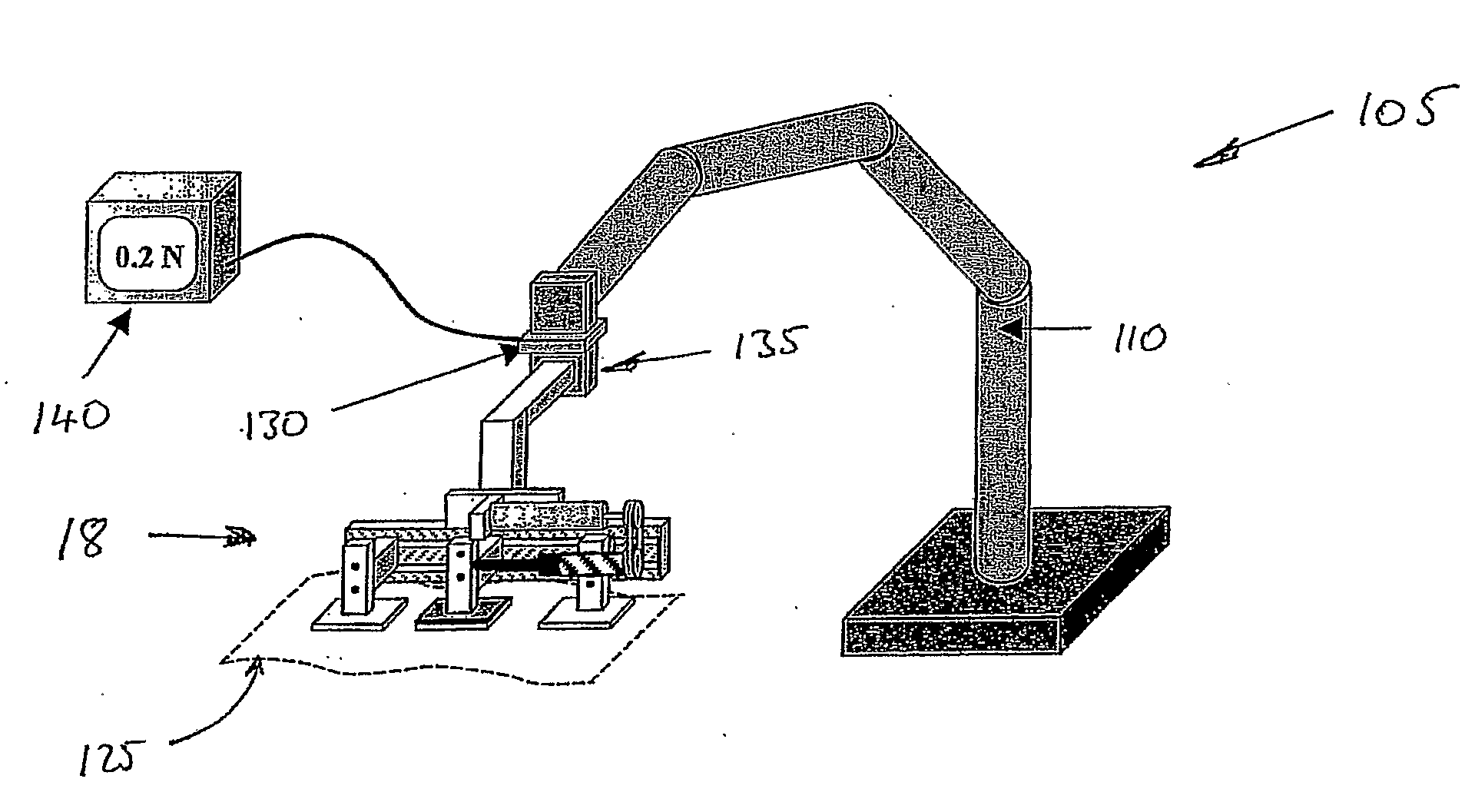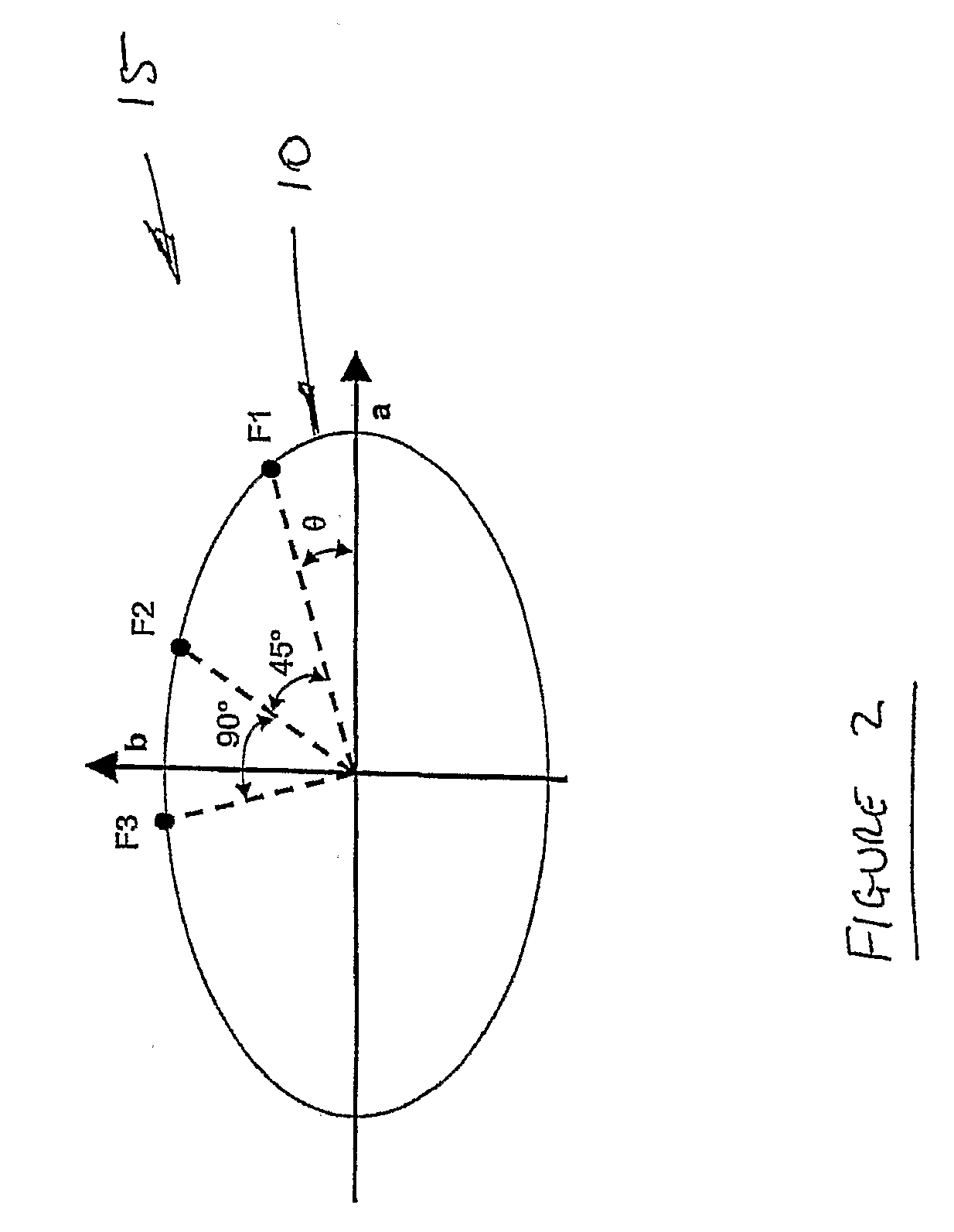Apparatus and Method For Measuring in Vivo Biomechanical Properties of Skin
a skin and biomechanical technology, applied in the field of skin biomechanical properties measurement, can solve the problems of inability to estimate the directionally dependent nt and nl values of commercial devices, complex mechanical behaviour of human skin, and inability to meet the needs of human skin
- Summary
- Abstract
- Description
- Claims
- Application Information
AI Technical Summary
Benefits of technology
Problems solved by technology
Method used
Image
Examples
Embodiment Construction
[0050]It has been reported that the load in the high modulus region is primarily due to the stretching of collagen fibres, drawn tight, whereas deformation of the elastin network governs behaviour in the low modulus region / initial phase, where a typical collagen molecule is sufficiently slack to represent little resistance to skin stretching. Therefore, by studying the high modulus region of the force-elongation curve, it is possible to attain information on the collagen structure.
[0051]When the moduli of the high stiffness region of the stress-strain curves through a fixed point in various orientations are plotted in polar co-ordinates, the graph of mechanical properties with respect to testing direction is periodic. It is clear from FIG. 1 that these points join to form an ellipse shape 1.
[0052]These results substantiate the hypothesis that Langer's line 5 is the preferred orientation of the fibres within the reticular dermal tissue. The results as shown in FIG. 1 demonstrate that...
PUM
 Login to View More
Login to View More Abstract
Description
Claims
Application Information
 Login to View More
Login to View More - R&D
- Intellectual Property
- Life Sciences
- Materials
- Tech Scout
- Unparalleled Data Quality
- Higher Quality Content
- 60% Fewer Hallucinations
Browse by: Latest US Patents, China's latest patents, Technical Efficacy Thesaurus, Application Domain, Technology Topic, Popular Technical Reports.
© 2025 PatSnap. All rights reserved.Legal|Privacy policy|Modern Slavery Act Transparency Statement|Sitemap|About US| Contact US: help@patsnap.com



